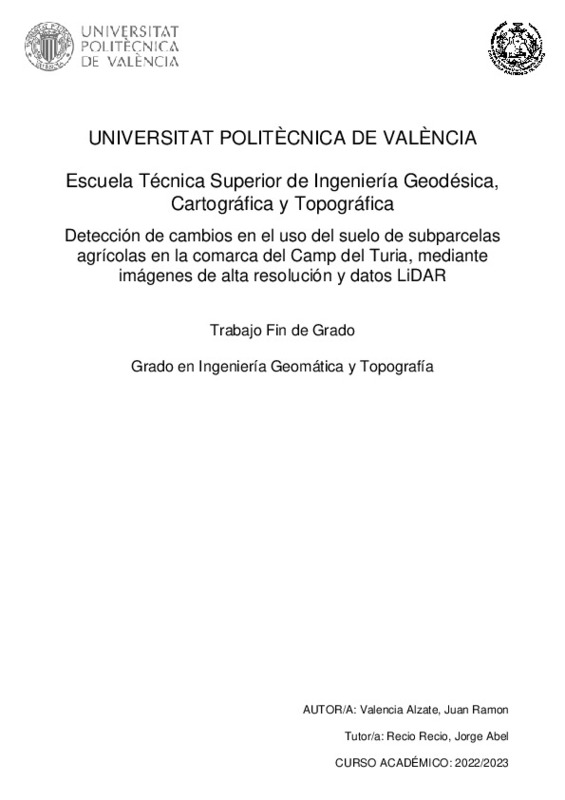JavaScript is disabled for your browser. Some features of this site may not work without it.
Buscar en RiuNet
Listar
Mi cuenta
Estadísticas
Ayuda RiuNet
Admin. UPV
Detección de cambios en el uso del suelo de subparcelas agrícolas en la comarca del Camp del Turia, mediante imágenes de alta resolución y datos LiDAR
Mostrar el registro completo del ítem
Valencia Alzate, JR. (2023). Detección de cambios en el uso del suelo de subparcelas agrícolas en la comarca del Camp del Turia, mediante imágenes de alta resolución y datos LiDAR. Universitat Politècnica de València. http://hdl.handle.net/10251/196189
Por favor, use este identificador para citar o enlazar este ítem: http://hdl.handle.net/10251/196189
Ficheros en el ítem
Metadatos del ítem
| Título: | Detección de cambios en el uso del suelo de subparcelas agrícolas en la comarca del Camp del Turia, mediante imágenes de alta resolución y datos LiDAR | |||
| Otro titulo: |
|
|||
| Autor: | Valencia Alzate, Juan Ramon | |||
| Director(es): | ||||
| Entidad UPV: |
|
|||
| Fecha acto/lectura: |
|
|||
| Resumen: |
[ES] En este proyecto se expone una metodología para la clasificación automática de subparcelas catastrales rústicas por uso del suelo, empleando algoritmos de aprendizaje automático (machine learning). Las clasificaciones ...[+]
[EN] This project presents a methodology for the automatic classification of rustic cadastral subplots by land use, using machine learning algorithms. The classifications that are made, serve as a basis for detecting the ...[+]
|
|||
| Palabras clave: |
|
|||
| Derechos de uso: | Reserva de todos los derechos | |||
| Editorial: |
|
|||
| Titulación: |
|
|||
| Tipo: |
|
Localización
recommendations
Este ítem aparece en la(s) siguiente(s) colección(ones)
-
ETSIGCT - Trabajos académicos [494]
Escuela Técnica Superior de Ingeniería Geodésica, Cartográfica y Topográfica







